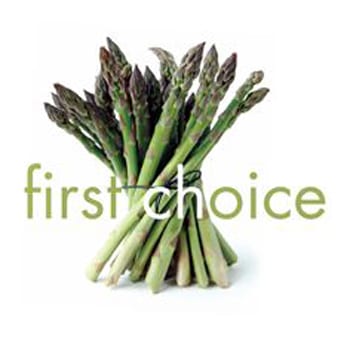Total Produce January Market Report

With all those festivities finally out of the way we look forward to the year ahead. Here’s our pick of the produce that will help keep your January menus sparklingly seasonal and well within budget.
Blood Oranges
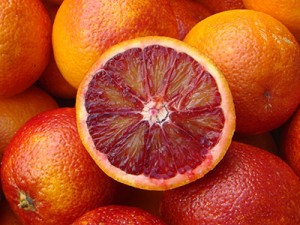 The first of this year’s blood oranges are already in the markets. There’s the Moro variety from Sicily and Sanguinello from Spain. Both have a very good colour which isn’t always the case at the beginning of the season. Blood oranges need a variation in temperature of at least 10 degrees, cooler night and warmer days. This stimulates the production of anthocyanin which is the pigment that gives blood oranges their glorious colour and allegedly health giving properties. Blood oranges will be around for at least 3 or 4 months so perfect for upcoming menus.
The first of this year’s blood oranges are already in the markets. There’s the Moro variety from Sicily and Sanguinello from Spain. Both have a very good colour which isn’t always the case at the beginning of the season. Blood oranges need a variation in temperature of at least 10 degrees, cooler night and warmer days. This stimulates the production of anthocyanin which is the pigment that gives blood oranges their glorious colour and allegedly health giving properties. Blood oranges will be around for at least 3 or 4 months so perfect for upcoming menus.
 Seville Oranges
Seville Oranges
Spanish Sevilles are in the markets now but they’re not around for long. There’s normally only one or two picks and the season is finished by early February. If you want to use them don’t hang about. You can always chuck a few in the freezer for later in the year, they do freeze extremely well. Sevilles are not just for marmalade, there’s so much more you can do with them. Do have a look at Bee Wilson’s recent article in The Guardian for Seville inspiration, both sweet and savoury.
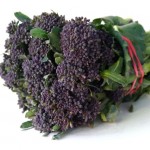 Brassicas
Brassicas
There’s plenty of very good, and very good value, home grown brassicas around this month and perhaps none finer than purple sprouting which really comes into its own this month. Back in the old days we didn’t see purple sprouting until January because older varieties need a cold spell to stimulate the plant into producing flowering buds. This process is called vernalization and that’s what has happened to the varieties that are around now. In her seminal Vegetable Book Jane Grigson writes that ‘purple sprouting is as near to a fine vegetable as the brassicas ever get’ and who are we to disagree with the blessed Jane?
There’s lots of other really good, home-grown brassicas. Savoy and January King cabbages, all kinds of kales and Cavolo Nero. Worth mentioning that UK grown Cavolo Nero usually finishes in early February and we have to move on to supplies from Italy. This is because cavolo bolts, or starts flowering, rather more easily than other brassicas.
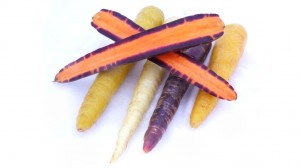 Roots
Roots
Winter roots, with that magical combination of quality and value, are just so versatile. Comforting cooked and refreshing raw, how can any January menu be be rootless? There’s a fantastic range of roots around at the moment, we really are spoilt for choice.
From UK growers there’s homely and delicious parsnips and swedes. There’s still plenty of British beetroots in red, gold and candy stripe varieties.
There’s large purple, white and yellow carrots from Brittany (often, but wrongly, called heritage). Celeriac and Jerusalem artichokes from growers on both sides of The Channel and parsley and chervil root from France. How about very delicious but oft overlooked salsify from Belgium and France?If you want something truly esoteric then there’s Crosnes or Japanese artichokes from France. Do check the price first though, like chervil root crosnes can be surprisingly expensive.
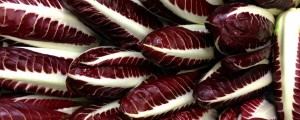 Salads & Chicories
Salads & Chicories
January can be a tricky month for salads and this year looks like being no exception. We rely heavily on Spanish growers through the winter for things like iceberg, gem, cos and cucumbers and unseasonably high temperatures before Christmas caused something of a glut. Inevitably gluts are followed by shortages so do keep an eye on those salad prices.
If you’re looking for something a little more out of the ordinary on the salad front then the chicory family has a lot to o er, they’ll all bring a touch of very welcome bitterness to your dishes. There’s red and white chicory or endive which is mostly from Holland. Do always check the price of red chicory, it can be expensive.
There’s a whole range of red, leafy chicories from Italy. Trevise, tardivo, castelfranco and the ubiquitous radicchio. Then there’s cicoria and puntarelle, both Italian and both part of the chicory family. The buds from the centre of the puntarelle plant are usually eaten raw but otherwise both these chicories are probably best cooked. Food writer Rachel Roddy writes that cicoria is ‘pleasingly bitter, like spinach that’s lost a lawsuit’. You’ll find Rachel’s excellent piece about cicoria on her blog Rachel Eats.
 Rhubarb
Rhubarb
The Yorkshire forced rhubarb season is late this year. It’ll be at least the middle of the month before we see any quantity and this slow start is all down to the mild weather. Before rhubarb goes into the forcing sheds it needs a final period of cold because this converts the root’s carbohydrates into sugars and it is these sugars that fuel growth once the plants are inside.
They have no other source of food in the sheds, they’re resting on cement floors. This method of forcing is unique to Yorkshire forced rhubarb and just one of the reasons why it is unsurpassed in terms of flavour, texture and colour. Just depriving a rhubarb plant of light when it is still growing in soil, which some other British growers do, is not the same thing and does not produce rhubarb of the same quality. Yorkshire forced rhubarb is a national culinary treasure and belongs on all self respecting menus.




